History of Coldirodi
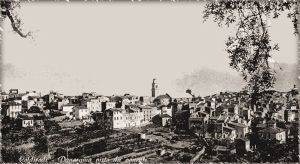 Situated along the ridge of the hill overlooking the inlets of Sanremo and Ospedaletti at an altitude of 254 metres above sea level, the village is made up of a typical shoulder settlement, later developed in the shape of a ridge by means of a matrix path positioned on the ridge watershed that crosses the village, dividing the urban fabric into two sides in a balanced way.
Situated along the ridge of the hill overlooking the inlets of Sanremo and Ospedaletti at an altitude of 254 metres above sea level, the village is made up of a typical shoulder settlement, later developed in the shape of a ridge by means of a matrix path positioned on the ridge watershed that crosses the village, dividing the urban fabric into two sides in a balanced way.
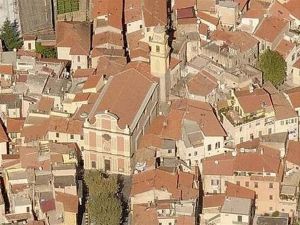 In the centre of the town the urban layout expands to form the central square of the village, that of San Sebastiano, while the linear development of the human settlement has remained intact in its ancient perimeters with the dwellings that still denote, despite the precarious maintenance conditions of many of them, singular beauty and spontaneity in their architectural forms, typical of the peasant houses scattered in the Ligurian hinterland.
In the centre of the town the urban layout expands to form the central square of the village, that of San Sebastiano, while the linear development of the human settlement has remained intact in its ancient perimeters with the dwellings that still denote, despite the precarious maintenance conditions of many of them, singular beauty and spontaneity in their architectural forms, typical of the peasant houses scattered in the Ligurian hinterland.
The name of the village derives - according to legend - from the Knights of Rhodes, i.e. the Knights of the Order of St. John Jerosolimitano, a group of whom were reportedly shipwrecked on the beach below the village during a voyage to Provence before leaving for the Crusades; found temporary shelter in the hut of a poor fisherman, the knights began to repair their ship and, after a few days, repaired the boat and returned to sea.
 According to another version of the legend, the knights landed on the hillside beach to heal a sick companion of theirs, who would then be healed thanks to the intervention of the local fishermen and perhaps also because of the particular mild climate of the area. These knights would later build a chapel and a hospice near the church of the Madonna della Ruota to show their gratitude to those who had so kindly welcomed and helped them, as well as for the spirit of charity towards all those pilgrims and wayfarers in need of care and hospitality. To confirm the foundation of these buildings there is also an act, notarized by the notary Giovanni di Amandolesio in 1259, which refers to a legacy in favour of a hospital and a church, perhaps identifiable with those that tradition attributes to the above-mentioned group of knights returning from the Crusades. Many years later, the Collantino territory was offered as a commendation, that is, as an ecclesiastical benefit granted to priests or lay people for life without them becoming the owners, and so the valley opened on the western side of the village, and the hill on which the village would rise, took the name of Valle di Rodi and Col di Rodi, even if it is worth remembering that until the second half of the 19th century the village has always been called simply "la Colla", assuming the current name of "Coldirodi" only in execution of a royal decree issued on 8 June 1882, when the village was still an autonomous municipality with jurisdiction over Ospedaletti, which was then a hamlet.
According to another version of the legend, the knights landed on the hillside beach to heal a sick companion of theirs, who would then be healed thanks to the intervention of the local fishermen and perhaps also because of the particular mild climate of the area. These knights would later build a chapel and a hospice near the church of the Madonna della Ruota to show their gratitude to those who had so kindly welcomed and helped them, as well as for the spirit of charity towards all those pilgrims and wayfarers in need of care and hospitality. To confirm the foundation of these buildings there is also an act, notarized by the notary Giovanni di Amandolesio in 1259, which refers to a legacy in favour of a hospital and a church, perhaps identifiable with those that tradition attributes to the above-mentioned group of knights returning from the Crusades. Many years later, the Collantino territory was offered as a commendation, that is, as an ecclesiastical benefit granted to priests or lay people for life without them becoming the owners, and so the valley opened on the western side of the village, and the hill on which the village would rise, took the name of Valle di Rodi and Col di Rodi, even if it is worth remembering that until the second half of the 19th century the village has always been called simply "la Colla", assuming the current name of "Coldirodi" only in execution of a royal decree issued on 8 June 1882, when the village was still an autonomous municipality with jurisdiction over Ospedaletti, which was then a hamlet.
During the Iron Age the territory of today's Coldirodi became the object of a primitive frequentation by men mainly devoted to hunting and sheep farming, who erected a system of fortifications built with dry-stone walls in close contact with each other on the top of the mountains, commonly known as "castellari" and destined to represent a valid defence of cultivated land, pastures, woods and the main communication routes from raids by marauders and enemy tribes. Some remains of a presumed pre-Roman castellar near today's Coldirodi have been found on the mountain called Mucchio di Scaglie, just above Capo Nero, where ceramic material of the Campania type dating back to the Republican age and of the pre-Roman impasto type was found, which testifies to the presence of an ancient castellar or even of a watchtower that later collapsed, while other archaeological finds found in the area irrefutably testify to the human frequentation of the mountain until at least the 4th century AD. Another fortification similar to the latter may have been located near the Croce di Padre Poggi, above the inhabited hill, where various ceramic finds dating back to around the same period as those found above Capo Nero have come to light.
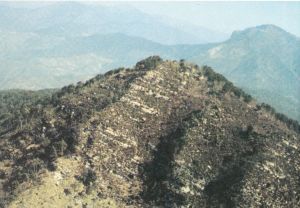 Perhaps also the remains of a large wall discovered in Costa Bevino, situated south of Monte Caggio in a thick wood, can be traced back to these keepers; they were probably a large enclosure of a village that was probably located in the area. Other finds, perhaps dating back to the pre-Roman or Roman age, were discovered in 1796 by Giacomo Semeria, who, digging in his lands located near Capo Pino, found several ancient coins, broken piñatas, inverted vases and an underground vault, while, some years before, another colantino, Giovanni Maria Rambaldi, excavating in the same place, had brought to light some ruins, a millstone and the bench of an ancient screw tool used for pressing olives.
Perhaps also the remains of a large wall discovered in Costa Bevino, situated south of Monte Caggio in a thick wood, can be traced back to these keepers; they were probably a large enclosure of a village that was probably located in the area. Other finds, perhaps dating back to the pre-Roman or Roman age, were discovered in 1796 by Giacomo Semeria, who, digging in his lands located near Capo Pino, found several ancient coins, broken piñatas, inverted vases and an underground vault, while, some years before, another colantino, Giovanni Maria Rambaldi, excavating in the same place, had brought to light some ruins, a millstone and the bench of an ancient screw tool used for pressing olives.
Between the ninth and tenth century many inhabitants of Villa Matutiana, the ancient Sanremo, to escape the risk represented by the increasingly frequent Saracen raids, had taken refuge in the mountains surrounding the coastal village and planted new settlements, among which there must have been also the primitive nucleus of the future Coldirodi, whose origins are perhaps only a few centuries later in reference to the events of the village of Poipino, existing in the 12th century near Capo Pino, where, in 1130, a contingent of the 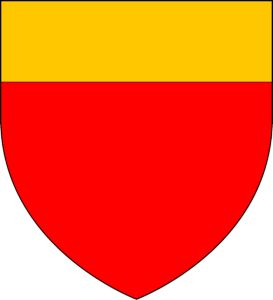
The village of Poipino was perhaps destroyed and the inhabitants then split into small groups that settled on the surrounding hills; the most numerous nucleus settled on the hill considered as the main one because of its strategic position, which was immediately called La Colla and on which the first families started to build huts, which would have kept the name of those ancient families, among which the Sapia, the Maso, the Boboni, the Straforelli and above all the Semeria, who, in order to be the most numerous and well-off, also built a tower, whose foundations are still visible.
Around the beginning of the XV century the village began to assume a certain consistency, as attested by the presence, since 1319, of a chapel dedicated to St. Sebastian and a defence tower, then destroyed in 1616, which depended, like all the surrounding territory, on the parish of San Siro di Sanremo under the ecclesiastical jurisdiction of the Bishop of Albenga.
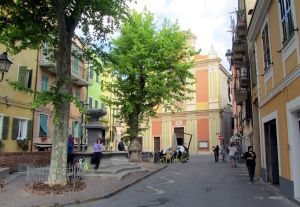 Towards the end of the fifteenth century, the inhabited nucleus grew considerably and at the same time the hill population increased considerably. The two massari of the church of San Sebastiano Giacomo Anfosso and Giovanni Calvino asked the bishop of Albenga for permission to separate their branch church from that of San Siro. After hearing the favourable opinion of the Provost of San Siro Giovanni Battista Gioffredo, the bishop Leonardo Marchese ingauno, considering the fact that the children, brought to baptism in winter, could die along the way and that the Sacraments were administered with great discomfort, accepted the request of the Collantini.
Towards the end of the fifteenth century, the inhabited nucleus grew considerably and at the same time the hill population increased considerably. The two massari of the church of San Sebastiano Giacomo Anfosso and Giovanni Calvino asked the bishop of Albenga for permission to separate their branch church from that of San Siro. After hearing the favourable opinion of the Provost of San Siro Giovanni Battista Gioffredo, the bishop Leonardo Marchese ingauno, considering the fact that the children, brought to baptism in winter, could die along the way and that the Sacraments were administered with great discomfort, accepted the request of the Collantini.
On 9 January 1494 the bishop Marquis then erected the church of San Sebastiano as a parish church (whose boundaries with the church of San Siro were established on the following 12 November) and at the same time he ordered that the mayors, the massari and the inhabitants of the Rhodes Valley should pay an annual fee of eight lire to the parish priest of Sanremo, in addition to paying two pounds of wax to the Chapter of San Siro on the feast day of San Romolo, on Holy Saturday and on the occasion of Pentecost. It was also agreed that, for the above mentioned occasions, the rector of San Sebastiano would go to Sanremo to help the parish priest of San Siro in the celebration of masses and other sacred functions, while the parish priest of San Siro would in turn be obliged to provide food for the rector of San Sebastiano in those days and could avail himself of the faculty to go, if he wished, to the church of San Sebastiano to celebrate the Conventual Mass there. In order to provide the new church with the necessary income, all the heads of the family also agreed to pay an annual canon, called the tithe of the church, to distinguish it from the one due to the parish, which consisted of a litre of oil and a motulaio of wheat, paid by the massari of the church and registered in the parish archives. However, the collection of tithes would have caused misunderstandings and disputes between the Collantini and the provost and the canons of San Siro, especially during the seventeenth century, due to the decrease in ecclesiastical taxes paid by the collantini farmers on the land cultivated in more recent times than those of their ancestors.
From the end of the 15th century Coldirodi remained, however, always dependent on the municipal administration of Sanremo, as documented by an act of 1516, from which it can be deduced that the Colla was completely subject to the laws, the Statutes and the Magnificent Parliament of Sanremo, with the exception of civil and criminal justice which was administered by the podestà and then by the Genoese commissioner resident in Sanremo. In the first half of the sixteenth century the village also had to suffer the dramatic consequences of the violent assaults by the Barbary pirates, who landed several times on our coasts threatening the countryside, penetrating the villages, raiding food and animals and, unfortunately, taking away many inhabitants, including women and children.
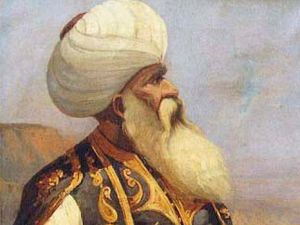 The first incursion of the Barbareschi into the territory of Coldirodi took place on 8th August 1543, when some ships of the Turkish fleet led by Ariadeno Barbarossa, then anchored in the bay of Nice waiting to attack the Savoy city, enemy as an ally of Spain, landed hundreds of pirates on the coast of Sanremo, who, after having been rejected by the local population, headed towards Coldirodi, where they plundered the countryside of the village and also made numerous prisoners of whom they would lose track because of Barbarossa's refusal to accept the relative offers of ransom made by the Sanremesi. A few years later, however, the Turks returned to hit the area of Coldirodi with a fleet of galleys loaded with Algerian pirates under the command of Dragut, who landed in the bay of Ospedaletti on 25th June 1555, then headed towards Coldirodi, where they took many inhabitants of the village as prisoners.
The first incursion of the Barbareschi into the territory of Coldirodi took place on 8th August 1543, when some ships of the Turkish fleet led by Ariadeno Barbarossa, then anchored in the bay of Nice waiting to attack the Savoy city, enemy as an ally of Spain, landed hundreds of pirates on the coast of Sanremo, who, after having been rejected by the local population, headed towards Coldirodi, where they plundered the countryside of the village and also made numerous prisoners of whom they would lose track because of Barbarossa's refusal to accept the relative offers of ransom made by the Sanremesi. A few years later, however, the Turks returned to hit the area of Coldirodi with a fleet of galleys loaded with Algerian pirates under the command of Dragut, who landed in the bay of Ospedaletti on 25th June 1555, then headed towards Coldirodi, where they took many inhabitants of the village as prisoners. 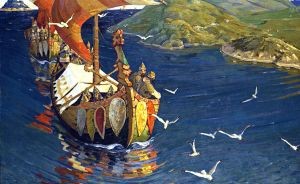 Immediately afterwards the pirates landed in the roadstead of Sanremo in the locality of San Rocco, offering the local authorities the possibility to ransom immediately the prisoners captured shortly before in Coldirodi; then began some tight negotiations between the Algerian pirates and the podestà Alessandro Giustiniani, at the end of which many Collantini managed to redeem several of their unfortunate fellow countrymen paying large sums of money, but the operations were abruptly interrupted due to a strong wind that forced the Turks to return to their ships and leave for Antibes, where the difficult negotiations continued for the ransom of the remaining prisoners, who would almost all be freed a few months later thanks also to the intervention of some merchants from Nice and the Sanremo Town Council itself, which had decided to allocate the proceeds from the sale of the communal pastures of Monte Bignone to this purpose. Only three prisoners could not be redeemed and unfortunately they ended their days as slaves. After this dramatic episode the Matuziano town council authorised the Collantini family to build a bastion on their head for a better and more concrete defence of the village from future and foreseeable attacks by the barbarians. In November 1558 the Genoese Senate had meanwhile accepted the request made by the community of the Colla to erect a defensive structure against pirate raids; two years later four towers were built to defend and sight the Barbarians under the direction of the Knight of Rhodes Collantini Tommaso Rossi.
Immediately afterwards the pirates landed in the roadstead of Sanremo in the locality of San Rocco, offering the local authorities the possibility to ransom immediately the prisoners captured shortly before in Coldirodi; then began some tight negotiations between the Algerian pirates and the podestà Alessandro Giustiniani, at the end of which many Collantini managed to redeem several of their unfortunate fellow countrymen paying large sums of money, but the operations were abruptly interrupted due to a strong wind that forced the Turks to return to their ships and leave for Antibes, where the difficult negotiations continued for the ransom of the remaining prisoners, who would almost all be freed a few months later thanks also to the intervention of some merchants from Nice and the Sanremo Town Council itself, which had decided to allocate the proceeds from the sale of the communal pastures of Monte Bignone to this purpose. Only three prisoners could not be redeemed and unfortunately they ended their days as slaves. After this dramatic episode the Matuziano town council authorised the Collantini family to build a bastion on their head for a better and more concrete defence of the village from future and foreseeable attacks by the barbarians. In November 1558 the Genoese Senate had meanwhile accepted the request made by the community of the Colla to erect a defensive structure against pirate raids; two years later four towers were built to defend and sight the Barbarians under the direction of the Knight of Rhodes Collantini Tommaso Rossi.
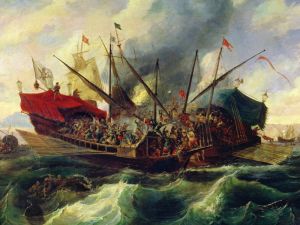 In 1563 the territory of Coldirodi was once again devastated by a gang of Turkish corsairs, who were to reappear in 1594, capturing sixty Collantini, then released on payment of a ransom of 8000 lire; Following this umpteenth barbarian attack, the City Council of Sanremo then decided to build a square tower to defend the coast, the future fort of Ospedaletti, then finished in 1597, creating at the same time a new city official, the Magistrate for the redemption of slaves, in charge of carrying out and coordinating the complex procedures for the release of prisoners, including numerous Collantini, still in the hands of barbarian pirates. Despite these precautions, the Turkish corsairs would still return in 1637 and 1656 making numerous prisoners, then redeemed some time later in Provence, where they partly settled.
In 1563 the territory of Coldirodi was once again devastated by a gang of Turkish corsairs, who were to reappear in 1594, capturing sixty Collantini, then released on payment of a ransom of 8000 lire; Following this umpteenth barbarian attack, the City Council of Sanremo then decided to build a square tower to defend the coast, the future fort of Ospedaletti, then finished in 1597, creating at the same time a new city official, the Magistrate for the redemption of slaves, in charge of carrying out and coordinating the complex procedures for the release of prisoners, including numerous Collantini, still in the hands of barbarian pirates. Despite these precautions, the Turkish corsairs would still return in 1637 and 1656 making numerous prisoners, then redeemed some time later in Provence, where they partly settled.
The persistence of the phenomenon continued also in the following century until the times of the Ligurian Republic, so much so that in 1797 the town council had approved the expenses sustained in occasion of an expedition against the Barbarians and in the following year the magistrate for the ransom of the slaves was still in office and very active.
In the meantime, the community of Colla continued to depend administratively on that of Sanremo, so much so that the Collantini always had to ask permission from the Matuzian governors for any initiative, as happened for example in 1635, when the inhabitants of the village, in order to bring drinking water to the village, had to ask permission from the Sanremo Town Council, who approved the project and appointed the people in charge to direct the work and to share the expenses among the various families of Collantine, who also appealed to the Council of Sanremo in 1683, 1721 and 1733 to obtain sanctions against those who had damaged the aqueduct by paying the sum of 1,000 lire, to which the Municipal Council of Matuzia added 1,100 lire. In 1749 the commissioner general of Sanremo, Gio Batta Raggio, who had been given the task by the authorities of the Republic to provoke the detachment of Coldirodi from Sanremo, with the collaboration of a priest, Gio Batta Rosso, had the rumour spread that if the Collantini wanted to avoid the probable ruin deriving from the very hard contributions imposed by the Austro-Sards after the end of the war of Austrian Succession that had directly involved the Ligurian West, they should have promoted the separation of Coldirodi from the city of Sanremo.
In the meantime, deep tensions and lively protests aimed at obtaining the emancipation of Coldirodi from Sanremo, led by a certain Gio Pietro Musso, continued to weave through the town. These protests led to the appeal presented by the Collantini in March 1752 to the commissioner Giuseppe Maria Doria, in which they formally requested the separation of the village from the city of Matuzzo for a whole series of reasons that were detailed in the document sent to the official of the Republic. Among the various reasons given by the Collantini to justify their request was the fact that the Sanremo authorities did not allow the representatives of the hamlet to attend the sessions of the local Parliament; the censors of Coldirodi had very limited powers; the payment of the taxes to the Municipality was particularly unsuccessful because the Sanremo authorities did not even bother to provide medical assistance to the inhabitants of the village; the Collantini had also to provide for the ordinary maintenance expenses of the clock, the fountain, the churches and the bells and the obligation for the collantini farmers to sell the lemons to the German woman at the price of twenty money less than in Sanremo. The Collantini also complained about the fact that the Municipality of Sanremo contracted debts beyond its economic capacity, while they had never been able to take advantage of the benefits deriving from the establishment of the Warehouse of Abundance, they had never been defended by the Sanremo troops in case of foreign aggression and, above all, they were strongly afraid that the Municipality of Matuziano wanted to introduce new taxes which they could not face because of the poor and precarious social conditions in which the town was living.
After carefully examining the practice, the Genoese authorities decreed on 1 February 1753 the separation of Coldirodi from Sanremo, giving the Commissioner General of Sanremo the power to appoint the forty members of the future Parliament Collantino, who would be flanked by two consuls, two mayors, two fathers of the Municipality and two censors, as well as the power to establish the limits between the two communities and draw the border line between their respective territories.
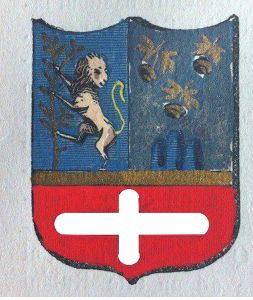 With the independence from Sanremo, the Republic also granted the community of Coldirodi the right to bear its own coat of arms, consisting of a lion rampant on the olive tree, which symbolises the most widespread type of cultivation while the lion is a representative element concomitant with that of Sanremo, a rose with three mounds, the first one recalling the most practiced type of floriculture and the second the prevailing characteristics of the settlement, a white cross on a red field and finally a crown overlooking the emblem.
With the independence from Sanremo, the Republic also granted the community of Coldirodi the right to bear its own coat of arms, consisting of a lion rampant on the olive tree, which symbolises the most widespread type of cultivation while the lion is a representative element concomitant with that of Sanremo, a rose with three mounds, the first one recalling the most practiced type of floriculture and the second the prevailing characteristics of the settlement, a white cross on a red field and finally a crown overlooking the emblem.
In the meantime, the news of the decision taken by the Genoese government had caused a real ruckus in Sanremo, where the municipal administrators immediately expressed to the Senate of Genoa their clear opposition to the separation from the Municipality of the hillside hamlet, which had always been united with the capital both from a temporal and spiritual point of view. However, the Senate did not revoke the decision already taken and sent Colonel and cartographer Matteo Vinzoni to Sanremo with the task of defining the boundaries between the two communities. After Vinzoni's arrival in Sanremo on 6th June 1753, a real popular uproar broke out, which would go down in history as the « revolution of Sanremo in 1753 », then harshly repressed by the Genoese troops led by General Pinelli in June of the same year.
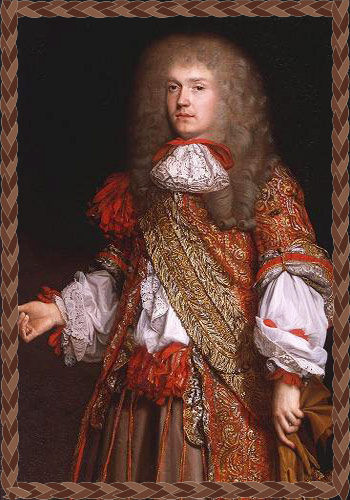 In the following October, when the echoes and the painful consequences of the revolution were still very much alive and burning, Colonel Vinzoni returned to Sanremo and resumed the work of delimiting the border between the Colla and the city of Matuziana with the collaboration of some experts, together with whom he fixed 64 pylons built all in mortar, which sanctioned the borders as far as the Prato di Bignone, that is the territory belonging to the Municipality of Baiardo. Also in 1753 the estimation of the whole territory of the Colla was started, which was finished and signed in June 1754, not without, however, avoiding the rise of dissatisfaction between Collantini and Sanremesi regarding the division of the municipal property into co-ownership, so much so that the commissioner general of Sanremo was forced to intervene several times to settle the disputes and encourage the stipulation of agreements between the parties involved on the ownership of disputed land. After a new dispute that arose in 1787 with Sanremo regarding the payment of tithes in favour of the church of San Siro, from which the Collantini were exempted, the area of Coldirodi was also involved in the war waged by French troops, who had penetrated western Liguria in April 1794, establishing a regime of occupation that would last for several years with heavy consequences for the civilian population of the main coastal towns, among which Coldirodi suffered particularly badly, forced in 1795 to incur a debt of 26. The town of Coldirodi was forced in 1795 to contract a debt of 26,000 lire to buy large quantities of wheat; however, as it was unable to pay the amount due within the deadline set for the excessive poverty, many Collantini were forced to leave the country, so much so that the commissioner of Sanremo Spinola, deeply concerned by this mass exodus, asked the central government to issue a measure that would limit this progressive and alarming depopulation as much as possible.
In the following October, when the echoes and the painful consequences of the revolution were still very much alive and burning, Colonel Vinzoni returned to Sanremo and resumed the work of delimiting the border between the Colla and the city of Matuziana with the collaboration of some experts, together with whom he fixed 64 pylons built all in mortar, which sanctioned the borders as far as the Prato di Bignone, that is the territory belonging to the Municipality of Baiardo. Also in 1753 the estimation of the whole territory of the Colla was started, which was finished and signed in June 1754, not without, however, avoiding the rise of dissatisfaction between Collantini and Sanremesi regarding the division of the municipal property into co-ownership, so much so that the commissioner general of Sanremo was forced to intervene several times to settle the disputes and encourage the stipulation of agreements between the parties involved on the ownership of disputed land. After a new dispute that arose in 1787 with Sanremo regarding the payment of tithes in favour of the church of San Siro, from which the Collantini were exempted, the area of Coldirodi was also involved in the war waged by French troops, who had penetrated western Liguria in April 1794, establishing a regime of occupation that would last for several years with heavy consequences for the civilian population of the main coastal towns, among which Coldirodi suffered particularly badly, forced in 1795 to incur a debt of 26. The town of Coldirodi was forced in 1795 to contract a debt of 26,000 lire to buy large quantities of wheat; however, as it was unable to pay the amount due within the deadline set for the excessive poverty, many Collantini were forced to leave the country, so much so that the commissioner of Sanremo Spinola, deeply concerned by this mass exodus, asked the central government to issue a measure that would limit this progressive and alarming depopulation as much as possible.
After the proclamation of the Ligurian Republic in June 1797, the new democratic government sent Gaspare Sauli to the West as « Commissioner of the Beyond the West », who on 26 July appointed the new Municipality of Colla, that is the group of inhabitants who were to take over the town's municipal administration, where the news of the change of government had been greeted with demonstrations of jubilation so much so that the population had immediately planted the Tree of Freedom. The new body, presided over by the « « citizen » Pier Lombardi and made up of nine members, issued a proclamation on 26th July, in which the citizens were informed of the constitution of the new Municipality, which would be installed in the National House together with the Justice of the Peace offices.
The following day, the Municipality of Collantina also appointed three Committees: one of Police, another of Buildings and the third of Economy, while the sessions of 28 and 29 July dealt with the issues of lemon harvesting, the distribution of water for irrigation and the cutting of hay in the meadows of Monte Bignone. The subsequent attempt by some charcoal burners and farmers in Genoa to implement a counter-revolution aimed at re-establishing the ancient noble regime at the beginning of September 1997 led the Ligurian democratic government to ask the various municipalities in the region to send men to defeat the rebels, so that the Municipality of Coldirodi, incited by the central administration of the Sanremo District, sent some of its countrymen to Genoa, who would however have already returned to the town on 13th September as the rebellion had been tamed. In this period, daily life in Coldirodi also adapted to the new political climate, which manifested itself, among other things, in the abolition of noble titles and any social distinction (only the title of « citizen » was allowed, the same for everyone), in the introduction of the calendar of the French Revolution and in the use of the term Burò to indicate the seat of the Town Council. 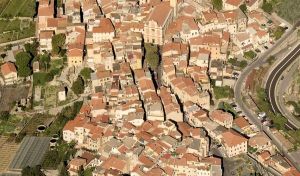 On 2 December 1797 the whole population of Collanto, gathered in the parish church, unanimously approved the text of the project of the new constitution prepared by the democratic government of the Ligurian Republic. A few months later, on 22nd May 1798, the nine members of the Municipality of Coldirodi, led by the president Giacomo Littardi and escorted by the armed force equipped with snaps and dust, starting from the National House, went to the Tree of Liberty, where they took the solemn oath of loyalty to democracy.
On 2 December 1797 the whole population of Collanto, gathered in the parish church, unanimously approved the text of the project of the new constitution prepared by the democratic government of the Ligurian Republic. A few months later, on 22nd May 1798, the nine members of the Municipality of Coldirodi, led by the president Giacomo Littardi and escorted by the armed force equipped with snaps and dust, starting from the National House, went to the Tree of Liberty, where they took the solemn oath of loyalty to democracy.
On 18 April 1798 the authorities of the Ligurian Republic had in the meantime issued a constitutional law according to which Coldirodi was erected as capital of one of the ten cantons into which the newly established Province of Sanremo was divided, called the Palm Jurisdiction and provided with a civil and criminal court. A few weeks later there was a serious clash between the Republicans of Porto Maurizio and the reactionary Savoy reactionaries of Oneglia, who were overwhelmed in a short time, triggering a widespread alarm among the local authorities, who on 6 June gave the community of Coldirodi the order to immediately send a company of one hundred men to help the Portorini. Once the need for the soldiers to help the Puerto Rican soldiers had waned due to the rapid defeat of the Portorini, the following 14th July the new Municipality was elected, whose presidency was chosen by Giacomo Rolleri, while Giovanni Battista Semeria assumed the position of secretary.
After a brief interval in which the Austrian dominion was restored in May 1800 due to the temporary absence of Napoleon engaged in the Egyptian campaign, at the beginning of June of the same year Bonaparte firmly resumed control of Liguria, so much so that already on 12 June in Coldirodi the old Municipality was back in operation, presided over by Antonio Bobone, who immediately had to deal with the thorny question of a new request for money made by General Massena, to which would be added other exacting demands from the French, including the supply of three hundred quintals of wheat and the payment of large sums of money to subsidise the occupying forces.
 During the Napoleonic period the people of Coldirodi also wanted to strongly reaffirm their will to maintain the administrative detachment from the community of Sanremo, so much so that, when the Genoese government made the possibility of a meeting of Coldirodi in Sanremo known, the president of the Municipality of Colla Giacomo Ascenzo expressed in December 1802 his strong opposition to such a project, declaring to be rather in favour of a union with Bordighera, but the feared annexation faded and Coldirodi maintained his autonomy.
During the Napoleonic period the people of Coldirodi also wanted to strongly reaffirm their will to maintain the administrative detachment from the community of Sanremo, so much so that, when the Genoese government made the possibility of a meeting of Coldirodi in Sanremo known, the president of the Municipality of Colla Giacomo Ascenzo expressed in December 1802 his strong opposition to such a project, declaring to be rather in favour of a union with Bordighera, but the feared annexation faded and Coldirodi maintained his autonomy.
With the annexation of Liguria to the French Empire in 1805, Coldirodi too was appointed to the leadership of the municipal administration a maire, who took up his duties for the first time on 23 July 1805, thus inaugurating the imperial period of the town's history, characterised by a heavy economic situation, aggravated by the continuous calls to arms by the Collantini, while those who remained were forced to live in miserable conditions due to the drastic reduction in agricultural and pastoral production, to which were added very serious famines that affected the population.
During these years the village, which was part of the Maritime Alps Department, was governed by a Municipal Council made up of ten members, plus a mayor and a deputy, as established by the law of the rainy 28th of the year VIII concerning municipalities with less than 5000 inhabitants, according to which the mayor and the deputy would remain in office for five years, the councillors ten years, but every five years half of them would have to be replaced; all the above appointments were made exclusively by the Prefecture of Nice, whose owner, Baron Du Bouchage, in the last years of the Napoleonic regime, appointed on 8 March 1813 Stefano Rossi and Gerolamo Bobone respectively new maire and new secretary of Coldirodi, who would hold the administration of the town until the fall of Napoleon.
In the meantime, new conflicts arose with the community of Sanremo in 1811, when the Matuzian authorities opposed, but without success, the extraordinary cutting of the woods surrounding the village, from the sale of which the sums needed for the construction of new municipal roads and the restoration of the existing ones were obtained.
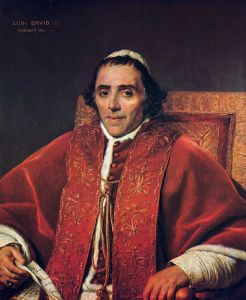 Defeated definitively Bonaparte in Leipzig and exiled to the island of Elba, the people of the hills gave a warm welcome to Pope Pio VII, who passed through the Riviera in February 1814 on his way back to Rome. When he arrived in Ospedaletti on 11th February, the Pope was acclaimed by the inhabitants and clergy of Coldirodi, who forcibly tried to lead the Pope to Coldirodi in the hope that he would spend the night there, but were overwhelmed by the reaction of the people of Sanremo, with whom they engaged in a real brawl, then barely sedated by the gendarmes and the militia of the National Guard.
Defeated definitively Bonaparte in Leipzig and exiled to the island of Elba, the people of the hills gave a warm welcome to Pope Pio VII, who passed through the Riviera in February 1814 on his way back to Rome. When he arrived in Ospedaletti on 11th February, the Pope was acclaimed by the inhabitants and clergy of Coldirodi, who forcibly tried to lead the Pope to Coldirodi in the hope that he would spend the night there, but were overwhelmed by the reaction of the people of Sanremo, with whom they engaged in a real brawl, then barely sedated by the gendarmes and the militia of the National Guard.
This episode should not be read, however, as a sign of deep hatred between the inhabitants of the two villages, but rather as an unequivocal attestation of the most intimate esteem for the Pope and of the contempt for Napoleon on the part of Collantini and Sanremesi.
In January 1815 Liguria became part of the Kingdom of Sardinia and also Coldirodi became a Savoy domain within the Nice Division, whose general intendant also ordered the convocation of the first Town Council under the new regime, which was presided over by the old chief Semeria, assisted by nine councillors. In May of the same year the Sanremo district was also the scene of a series of attacks against defenceless citizens by a pack of deer wolves, which also killed a girl from Coldirodi, so much so that the local authorities hired a team of twenty-four hunters from the Aosta Valley to hunt the ferocious felines, which were then exterminated thanks also to the intervention of some volunteer patrols, who joined the Valdostan hunters in April 1816, after which there were no more sightings of wolves or attacks on people by these animals.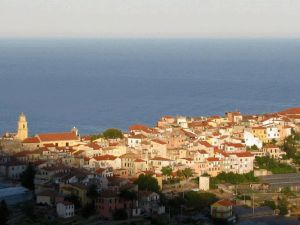 After the transfer of the Nice Division to France in March 1860, Coldirodi became part of the new province of Porto Maurizio, maintaining the status of an autonomous municipality with Ospedaletti as its hamlet, while in the '70s floriculture gradually began to spread, thanks above all to the initiative of Giovanni Littardi, a doctor with a collar, who, after having uprooted all the lemons that were in one of his properties in the Porrine, arousing the protests of his parents still attached to the cultivation of citrus fruits, decided to plant flower crops there, which now represented a much more profitable activity than that linked to the production and trade of citrus fruits.
After the transfer of the Nice Division to France in March 1860, Coldirodi became part of the new province of Porto Maurizio, maintaining the status of an autonomous municipality with Ospedaletti as its hamlet, while in the '70s floriculture gradually began to spread, thanks above all to the initiative of Giovanni Littardi, a doctor with a collar, who, after having uprooted all the lemons that were in one of his properties in the Porrine, arousing the protests of his parents still attached to the cultivation of citrus fruits, decided to plant flower crops there, which now represented a much more profitable activity than that linked to the production and trade of citrus fruits.
In February 1887 also Coldirodi was hit by the violent earthquake that devastated the western Liguria region, causing the fall of some walls of houses and causing injuries to a dozen people, one of whom died a few days after the earthquake, for the consequences of which the State granted a loan of 197,890 lire to private individuals, while the municipality received a public subsidy of 94,600 lire to finance the expenses for the clearing of rubble, the rehabilitation of roads and the repair of public and religious buildings damaged by the earthquake.
After the First World War, during which many Collantini fell, the town lost its autonomy in February 1928 as part of the general administrative reorganisation implemented by the Fascist regime, which downgraded Coldirodi to a hamlet of Ospedaletti.
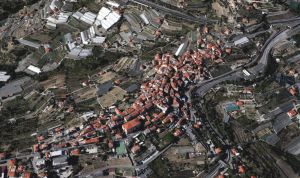 During the subsequent War of Liberation, partisan groups also operated in Coldirodi, including the Patriotic Action Teams (SAP), established in September 1944, while in February of the following year the local CLN was established, composed of Camillo Dirico, Luigi Borgogno, Sirio Gualazzi, Francesco Renda, Francesco Zirio and Giuseppe Vizindio. A serious war episode took place in the village on 19 December 1944, when the Germans killed the partisans Lelio Giaccaglia (Bill) and Giuseppe Caputi (Pasquale), as well as the young collantino Giuseppe Graziano, after which they proceeded with the raking of the village by conveying all the inhabitants to the parish church and from there to Sanremo, from where, thanks above all to the mediation of the then parish priest Don Giovanni Battista Lanteri, they were fortunately released.
During the subsequent War of Liberation, partisan groups also operated in Coldirodi, including the Patriotic Action Teams (SAP), established in September 1944, while in February of the following year the local CLN was established, composed of Camillo Dirico, Luigi Borgogno, Sirio Gualazzi, Francesco Renda, Francesco Zirio and Giuseppe Vizindio. A serious war episode took place in the village on 19 December 1944, when the Germans killed the partisans Lelio Giaccaglia (Bill) and Giuseppe Caputi (Pasquale), as well as the young collantino Giuseppe Graziano, after which they proceeded with the raking of the village by conveying all the inhabitants to the parish church and from there to Sanremo, from where, thanks above all to the mediation of the then parish priest Don Giovanni Battista Lanteri, they were fortunately released.
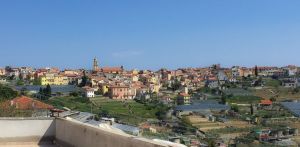 In the first years after the war, the community of Coldirodi, considered old and anachronistic disagreements and contrasts with Sanremo, even before the completion of the new road that joined it to the city of Matuzzo and in order to collect a considerable part of the proceeds of the Sanremo Gambling House, asked, with 90% of the approval, to be part of the Municipality of Sanremo. On 3 October 1949, the Matuzian Town Council laid the foundations for the re-enactment of Coldirodi by voting, with 21 votes in favour, 6 abstentions and one against, an agenda presented by the Councillor Lawyer Semeria, with which the Sanremo Town Council "noted the perfect identity of interests" between the two communities, which made Sanremo "the natural seat where all Coldirodi's activities are based", Considering the decisive contribution of hill floriculture to the development of the matuziana floriculture and the importance of Coldirodi's natural and artistic attractions for tourism in the Sanremo area, he gave a favourable opinion to the request submitted by the citizens of Coldirodi, hoping for a prompt definition of the practice.
In the first years after the war, the community of Coldirodi, considered old and anachronistic disagreements and contrasts with Sanremo, even before the completion of the new road that joined it to the city of Matuzzo and in order to collect a considerable part of the proceeds of the Sanremo Gambling House, asked, with 90% of the approval, to be part of the Municipality of Sanremo. On 3 October 1949, the Matuzian Town Council laid the foundations for the re-enactment of Coldirodi by voting, with 21 votes in favour, 6 abstentions and one against, an agenda presented by the Councillor Lawyer Semeria, with which the Sanremo Town Council "noted the perfect identity of interests" between the two communities, which made Sanremo "the natural seat where all Coldirodi's activities are based", Considering the decisive contribution of hill floriculture to the development of the matuziana floriculture and the importance of Coldirodi's natural and artistic attractions for tourism in the Sanremo area, he gave a favourable opinion to the request submitted by the citizens of Coldirodi, hoping for a prompt definition of the practice.
Seven years later, the municipality of Sanremo di Coldirodi was joined to the Municipality of Sanremo, which, after being a hamlet of Ospedaletti, became a hamlet of the city of Matuzzo in execution of the relative decree issued by the President of the Republic Giovanni Gronchi.
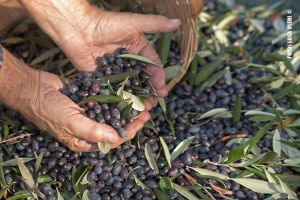 Starting from the '20s, and more massively after the end of the last world war, the phenomenon of immigration of many southern families, and in particular from Abruzzo, had meanwhile significantly increased the number of people living in the hills, now around 3200 inhabitants, who had dedicated themselves for centuries to the cultivation of citrus and olive trees, but were already at the forefront of floriculture, He worked with great fervour and industriousness in floriculture, which today has become by far the main economic activity of the town, transforming the hill into an expanse of greenhouses, which gradually replaced the land used for olive growing, which, at the time of its maximum expansion, allowed the operation of as many as thirty-two motor-driven mills and fifteen operated with hydraulic systems.
Starting from the '20s, and more massively after the end of the last world war, the phenomenon of immigration of many southern families, and in particular from Abruzzo, had meanwhile significantly increased the number of people living in the hills, now around 3200 inhabitants, who had dedicated themselves for centuries to the cultivation of citrus and olive trees, but were already at the forefront of floriculture, He worked with great fervour and industriousness in floriculture, which today has become by far the main economic activity of the town, transforming the hill into an expanse of greenhouses, which gradually replaced the land used for olive growing, which, at the time of its maximum expansion, allowed the operation of as many as thirty-two motor-driven mills and fifteen operated with hydraulic systems.
Finally, it is worth mentioning the tourist sector, which today can make use of a discreet hotel reception and a number of restaurants able to offer their numerous customers the variety of a cuisine rich in typical Ligurian and Abruzzi dishes, destination above all of Sunday groups and frequently chosen by newlyweds from all over the province of Imperia for their wedding lunches.
(sources: text by Andrea Gandolfo; personal and web archive images)




